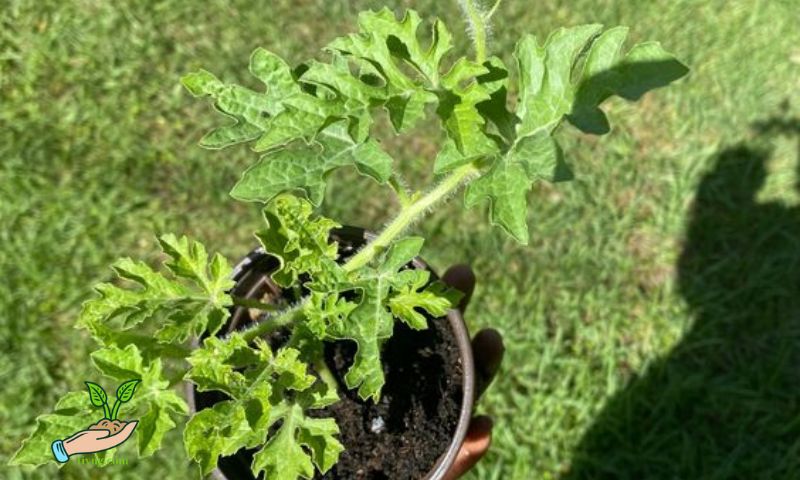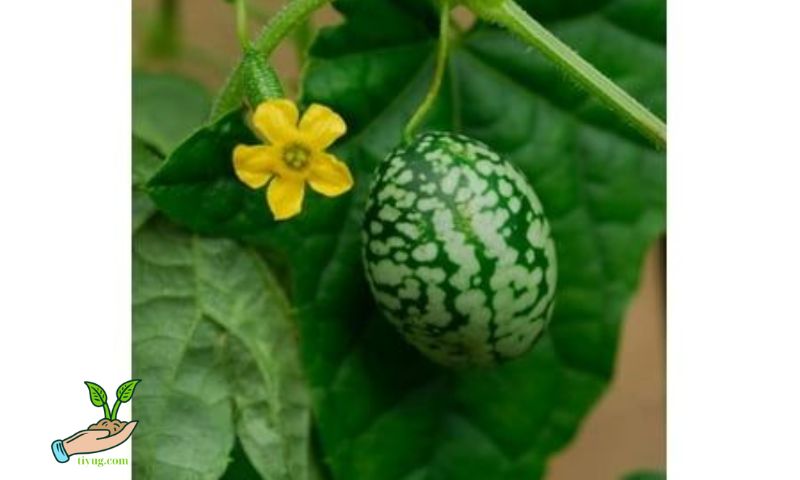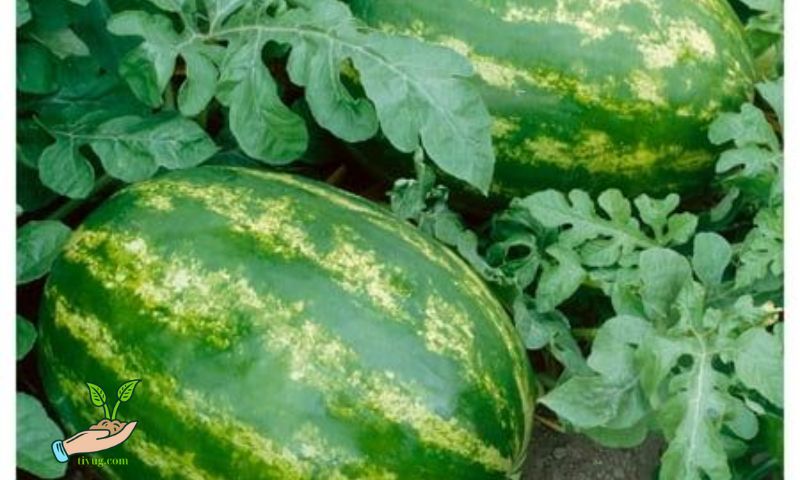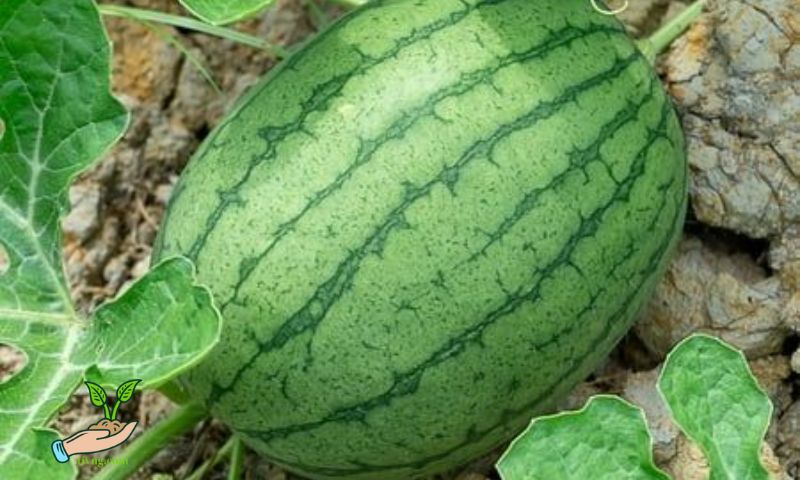Watermelons are a beloved summer fruit, cherished for their refreshing taste and high water content. Starting with a healthy young watermelon plant can significantly increase your chances of a successful harvest. In this guide, we’ll cover everything you need to know about growing and caring for a young watermelon plant, from planting to harvesting.
Section 1: Understanding Young Watermelon Plants

A young watermelon plant is typically characterized by its tender, green vines, and budding leaves. Unlike starting from seeds, which can be more time-consuming and uncertain, beginning with young plants gives you a head start. These plants are already established, making them more resilient and quicker to fruit. Young watermelon plants provide a better foundation for achieving a bountiful harvest.
Section 2: Planting a Young Watermelon Plant
Ideal Planting Time and Climate
Watermelons thrive in warm weather. The ideal time to plant a young watermelon plant is in the late spring after the last frost when the soil temperature is consistently above 70°F (21°C). Watermelons require a long growing season, typically around 80 to 100 days of warm weather, to reach maturity.
Preparing the Soil
Watermelons prefer well-drained, sandy loam soil with a pH between 6.0 and 7.5. Start by clearing the planting area of weeds and debris. Then, incorporate organic matter such as compost or well-rotted manure into the soil to improve fertility and drainage.
Planting Techniques
- Spacing and Depth: Plant young watermelon plants about 6 to 8 feet apart in rows spaced 6 to 8 feet apart. This spacing allows the vines to spread and reduces the risk of disease.
- Watering Requirements: After planting, water the young watermelon plants thoroughly. Ensure the soil remains consistently moist but not waterlogged, especially during the first few weeks after planting.
Section 3: Caring for Your Young Watermelon Plant

Watering Schedule
Watermelons require regular watering, especially during dry periods. Aim to provide about 1 to 2 inches of water per week. Water the plants deeply to encourage deep root growth, but avoid getting the leaves wet to reduce the risk of fungal diseases.
Fertilizing Tips
Young watermelon plants benefit from a balanced fertilizer. Apply a fertilizer with equal parts nitrogen, phosphorus, and potassium (e.g., 10-10-10) at planting time. As the plants grow, side-dress them with additional fertilizer when they begin to vine and again when they start to flower.
Weed Control
Keep the area around your young watermelon plants free of weeds, which can compete for nutrients and water. Hand weeding or using a hoe can be effective. Applying a layer of organic mulch around the plants can also help suppress weeds and retain soil moisture.
Mulching
Mulching is beneficial for young watermelon plants. Apply a 2- to 3-inch layer of organic mulch, such as straw or wood chips, around the base of the plants. This helps regulate soil temperature, retain moisture, and prevent weeds.
Section 4: Protecting Your Young Watermelon Plant

Common Pests and Diseases
Watermelon plants are susceptible to various pests and diseases. Common pests include aphids, cucumber beetles, and squash bugs. Use insecticidal soap or neem oil to control these pests. For disease prevention, practice crop rotation and avoid overhead watering to reduce the risk of fungal infections like powdery mildew and downy mildew.
Weather Protection
Watermelons are sensitive to cold temperatures. Protect young watermelon plants from unexpected frosts by covering them with row covers or cloches. During extreme heat, provide shade to prevent wilting and sunscald.
Section 5: Encouraging Healthy Growth
Pruning and Thinning
Pruning can help improve air circulation and reduce disease risk. Remove any damaged or diseased leaves and thin the vines if they become too crowded. Thinning the fruits can also be beneficial; leaving only 2 to 3 melons per vine can ensure larger, healthier fruits.
Supporting the Plant
As the vines grow, consider using trellises or cages to support the plants. This keeps the fruits off the ground, reducing the risk of rot and pest damage. If growing watermelons vertically, make sure to use slings to support the weight of the fruits.
Monitoring Growth and Development
Regularly inspect your young watermelon plants for signs of pests, diseases, or nutrient deficiencies. Yellowing leaves can indicate a lack of nitrogen, while stunted growth may suggest poor soil conditions or inadequate watering. Address issues promptly to keep your plants healthy.
Section 6: Harvesting Tips
Signs of a Mature Watermelon
Knowing when to harvest your watermelons is crucial. Look for these signs of maturity:
- The tendril nearest the fruit turns brown and dries up.
- The underside of the watermelon changes from white to a creamy yellow.
- The fruit produces a deep, hollow sound when tapped.
Best Practices for Harvesting
Use a sharp knife or pruning shears to cut the watermelon from the vine, leaving about 2 inches of stem attached. Handle the fruits gently to avoid bruising. Harvest in the early morning or late evening when temperatures are cooler to preserve freshness.
Conclusion
Growing and caring for a young watermelon plant requires attention to detail and consistent effort. By following the guidelines outlined in this guide, you can enjoy a successful harvest of juicy, sweet watermelons. Start with healthy young watermelon plants, provide proper care, and protect them from pests and diseases to ensure a bountiful crop.
FAQs
How long does it take for a young watermelon plant to produce fruit?
It typically takes about 80 to 100 days from planting a young watermelon plant to harvest mature fruits. The exact duration depends on the variety and growing conditions.
Can young watermelon plants be grown in containers?
Yes, young watermelon plants can be grown in containers, provided the container is large enough to accommodate the plant’s extensive root system. Use a container with a minimum depth of 18 inches and ensure it has good drainage.

